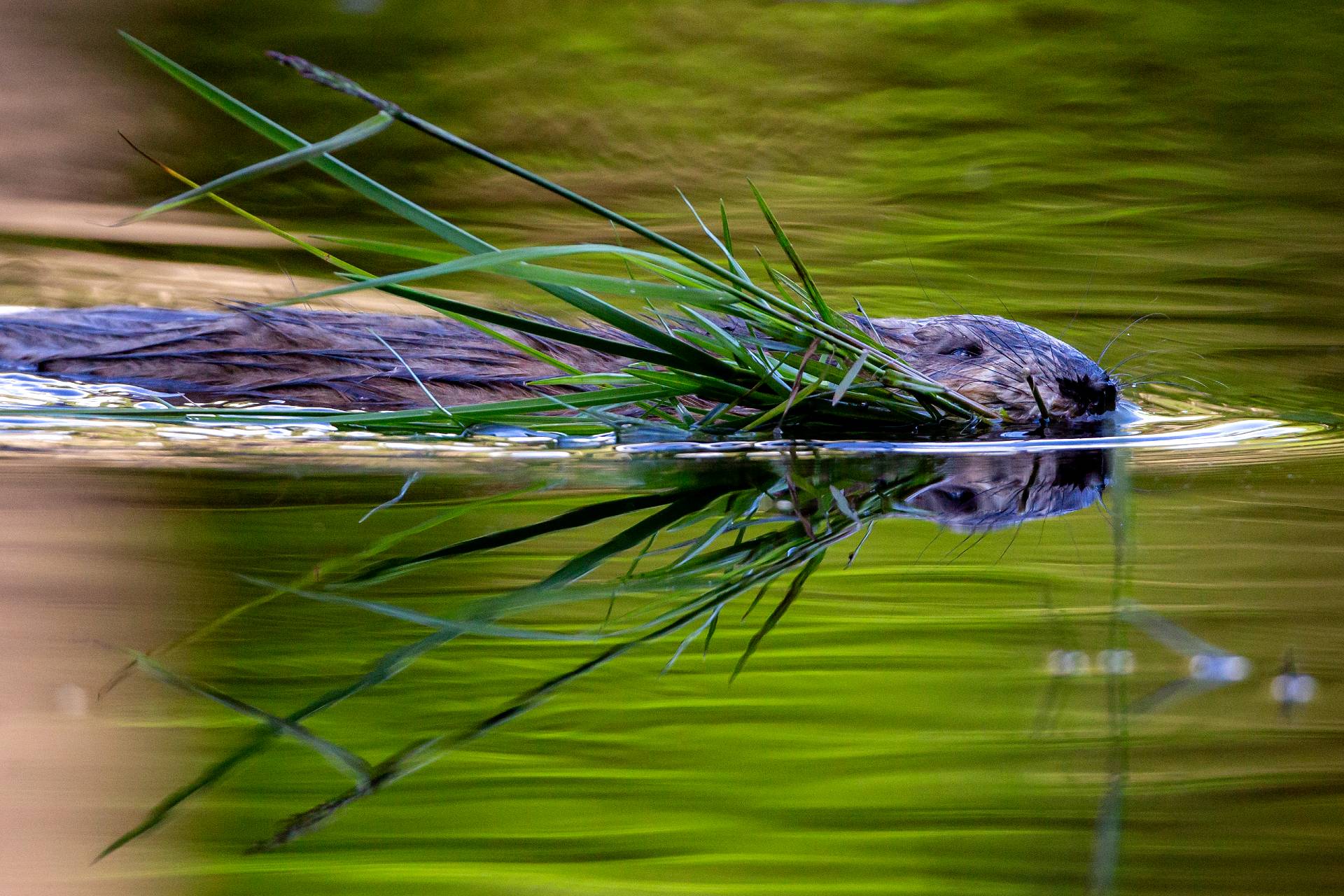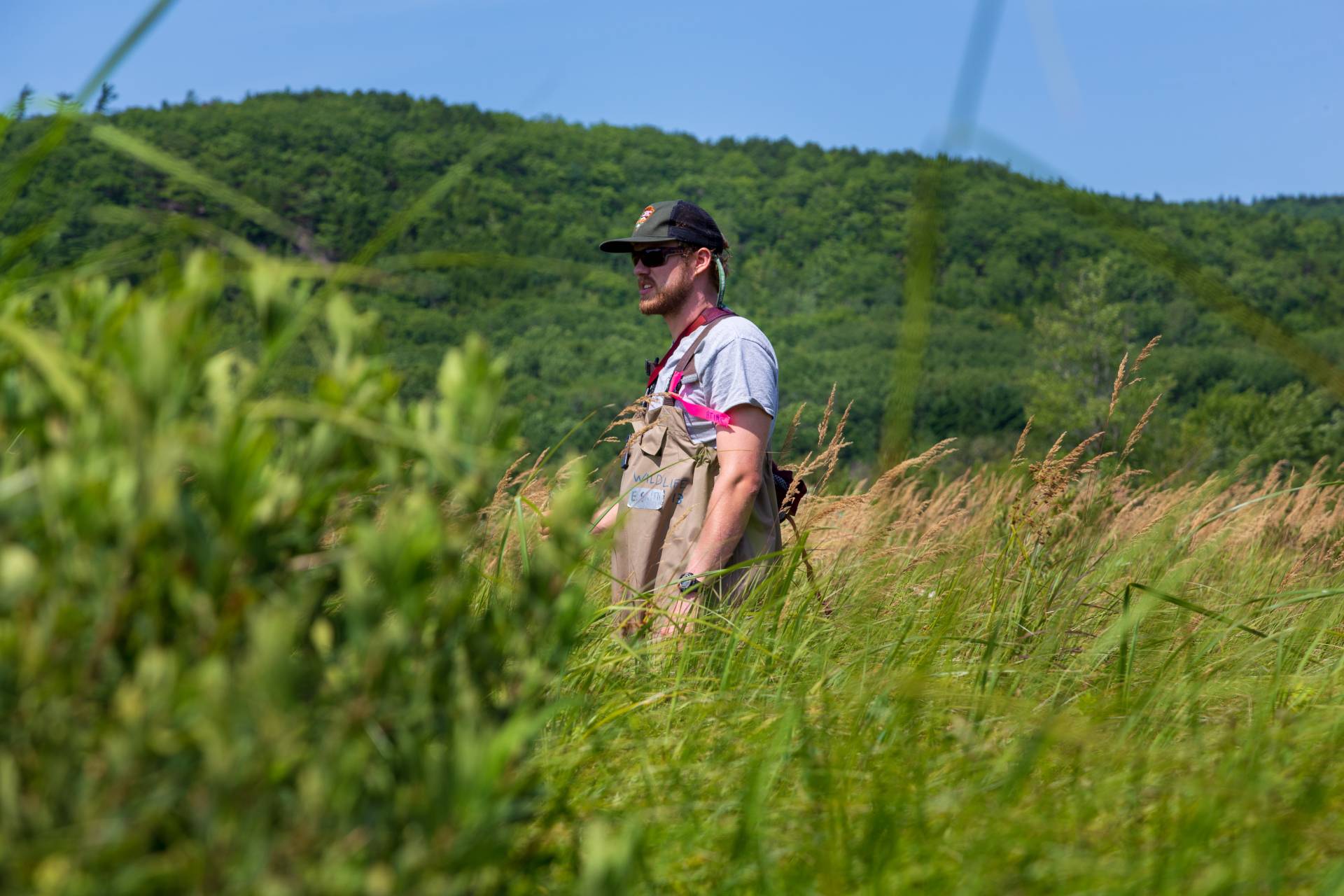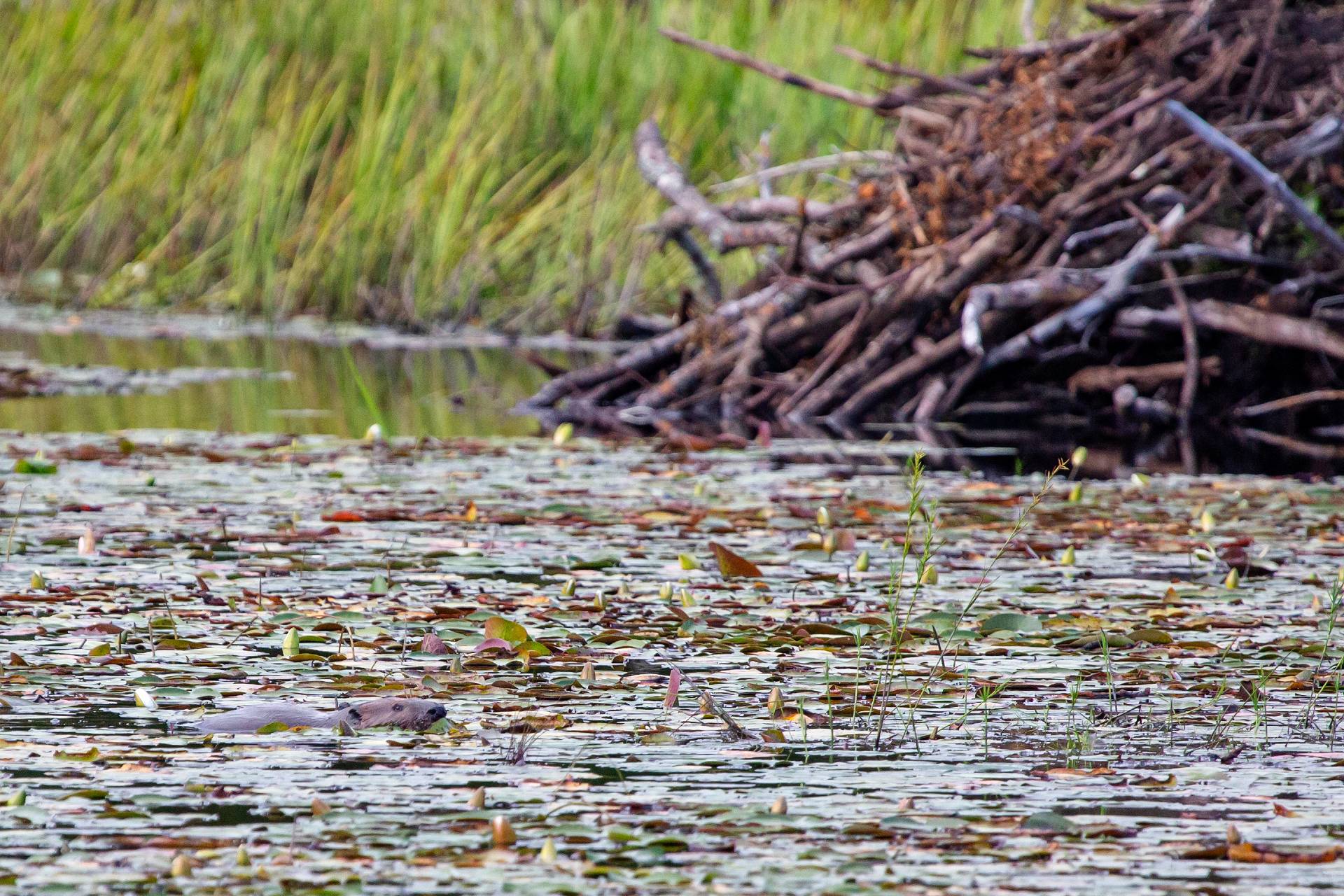Leave it to Beaver
These dedicated builders create important ecosystems in Acadia.
July 24th, 2024
These dedicated builders create important ecosystems in Acadia.
July 24th, 2024
BY SHANNON BRYAN
Beavers are among the most industrious creatures on the planet. They are dedicated builders and engineers, constructing lodges for their families and dams that aptly manage water. They’re great at maintaining those structures, too, patching holes with mud and sticks they’ll carry in with their forepaws. Beavers can hold their breath underwater for approximately 15 minutes and swim up to five miles per hour (more than twice as fast as the average human).
Impressively, beavers’ work not only shapes their environments, but it also creates habitat for a range of flora and fauna.
In Acadia National Park, beavers weren’t considered as part of the planning process as roads and other infrastructure were built, partly because there weren’t many around. By the mid-1800s, a once-robust beaver population in North America was decimated by the fur trade.
Decades later, the park’s first superintendent, George B. Dorr, believed it was important to bring this species back to the area. Reintroduction efforts began in the 1920s.

A beaver swims with a mouth full of snacks. (Photo by Ashley L. Conti/Friends of Acadia)
Even still, when the work of beavers conflicted with the desires of park managers or property owners, the prevailing approach was to remove the beaver.
But that’s not today’s approach.
Instead, park managers are aiming to reimagine the infrastructure in a way that is not going to create friction.
“Beavers are important to the ecology and important to the landscape,” said Bik Wheeler, wildlife biologist at Acadia National Park. “They’re here, and the park’s perspective is they should stay here.”

Wildlife Technician Erickson Smith works to assess beaver activity in Great Meadow as part of a census survey aimed at understanding the population dynamics of beaver in the Cromwell Brook and Otter Creek watersheds in Acadia National Park. Data containing the locations and conditions of beaver sites (dams, lodges, and forage sites) will help the park to create a beaver management plan in the future. (Photo by Will Greene /Friends of Acadia)
A good example of that holistic forethought is happening right now in Great Meadow, where the park is planning to replace a culvert this fall.
The current culvert’s size and cylindrical shape aren’t ideal to allow water to pass through during heavy rain events, which are expected to increase as the climate changes. Add to that, debris tends to get caught up in the culvert, further hindering the flow of water and resulting in flooding.
As the park plans for the culvert replacement, they’re taking the entire ecosystem into account. And beavers are top of mind.
“I want to ensure the replacement of the culvert is done in a way that beavers can still persist,” Wheeler said. While it’s impossible to know the future, having them in Acadia may be particularly beneficial as the environment changes.
“In the potential scenarios that we have for the park, beavers may end up tempering some of the negative impacts from climate change,” said Wheeler. “They are a really good tool to have on the landscape. They have jobs, there job is to regulate water in a place.”

A beaver lodge sits in Great Meadow from Emery Path in Acadia National Park. (Photo by Ashley L. Conti/Friends of Acadia)

A beaver swims through Acadia National Park Pond. (Photo by Ashley L. Conti/Friends of Acadia)
In Acadia, keep your eyes peeled for beaver lodges, typically found surrounded by water or next to the bank of a river or pond, or signs of beaver activity in the woods, like tree stumps with teeth marks.
Beavers are most active at dawn and dusk—you might spot them moving smoothly through water, just the tops of their heads poking out, their snouts leading the way. But beavers are pretty good at maintaining personal boundaries and will use their tails to slap the surface of the water to let you know you’ve gotten too close.